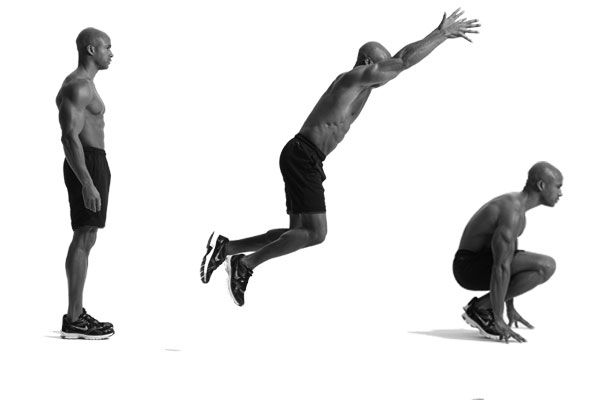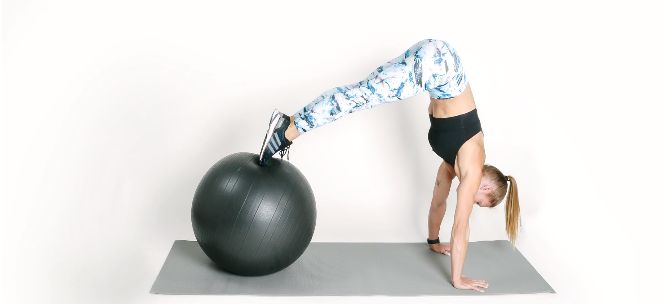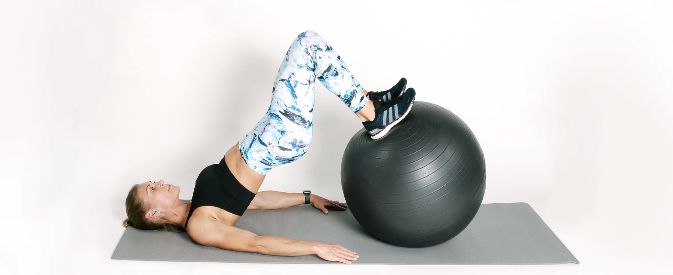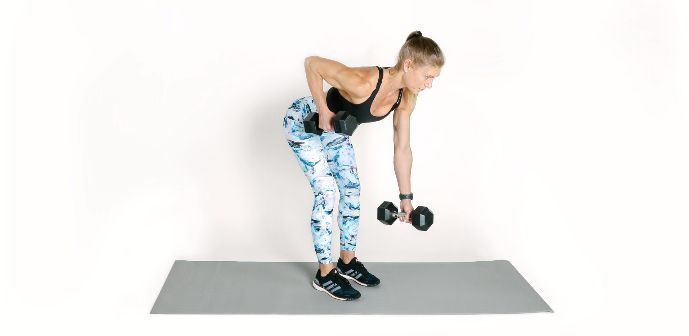I travel quite a bit for work, and I’m able to get in my runs. But I’d love to figure out a convenient way to get in regular strength training. Do you have any ideas for runners on the road? Thank you! ~Linda
Kudos to your on-the-road training, Linda! Regular travel can be challenging when it comes to getting into a consistent routine, but it’s not impossible. The key is to have a flexible plan and a go-to workout you can do anywhere.
I created one of my favorite on-the-road strength workouts a few years ago when I was in your shoes. It’s tailored to the specific needs of a runner and includes exercises that target strength, balance, and mobility. It’s like a Swiss Army Knife because you don’t need any equipment, it can be done pretty much anywhere in 10 or 20 minutes, and the exercise sequence can be modified to keep it fresh and challenging. Plus, if you add a warmup and cooldown, it becomes its own workout that can be performed on those days when you can’t get in a run.
Use a digital watch with an interval timer, and set it up to repeat the interval at 75-second increments. Follow the 10 strength exercises back-to-back, performing each for one minute. The goal is to keep your heart rate up by moving from one exercise to the next while fatiguing target muscle groups. (Note: The 15 extra seconds allows for movement into the next exercise. If you find you need less time, you can shorten the interval time.)
If you are new to strength work, complete each exercise in order once. If you have been doing some strength training, complete the circuit twice.
Repeat this sequence 2-3 times per week--do it after a run or as a standalone workout with an added warmup and cooldown--for 3-4 weeks. Then modify it by starting with the last exercise first and going in reverse order. Hold that pattern for 2-3 weeks, then change the sequence to get in all the lower body exercises (squat, lunges…) consecutively, then upper body moves, and finally the core work (planks, crunches).
As you go, you can eventually mix up the routine during the week to include one of each sequence. It’s amazing how just a little change in the exercise order can make for a different challenge in the body.
Runner’s Strength Workout 1.0
Squat and Calf Raise: Standing with your feet hip-width apart, sit back and lower down into squat position focusing on keeping your weight back over your heels. Press and extend your legs, and then press up onto your toes for a calf raise. Lower and repeat slowly for one minute.
Push Up + Plank Hold: Start in modified push up position on your hands and knees (unless you perform push ups regularly). Press up and extend the arms straight, hold for 5 seconds with a neutral body alignment (plank), and lower slowly back down. Repeat for 1 minute.
Lunges (60 seconds each leg): Stagger your feet front and back and about hip width apart. Take an exaggerated step forward. Keeping your core in good alignment, bend the front knee 90-degrees until the thigh is parallel with the floor. Make sure the knee is over the ankle and not beyond the toes. Pause and push through your front heel to return to starting position and repeat for one minute. Perform one minute on each side.
Plank (30 seconds): Lie face down with your forearms on the floor. Push up so your elbows are under your shoulders and arms bent at 90 degrees. Hold your body in a straight line from your head to your feet.
Side Plank (30 seconds each side): Shift to your side on your elbow and feet, and hold the lateral plank for 30 seconds. Repeat on the other side.
Plank (30 seconds): See above.
Single Leg T-Raise (60 seconds each leg): Stand on your left leg with your arms at your sides. Keep your right leg straight and bend forward from the hips, raising your right leg behind you to form a “T” out of your body. Hold for 5 seconds. Lower and repeat on the other side, alternating sides for 1 minute.
Bridge: Lie on your back with your hands by your sides on the floor. Using your gluteal muscles (bum), squeeze and lift your hips off the floor until you make a line from your knees to your hips and shoulders. Pause for a few seconds and lower your hips back to the floor while continuing to press in to the ball. Repeat for 1 minute.
Jack Knife Crunches: Lay on your back with your arms over your head and your legs bent with feet on the floor. Crunch and extend your legs slowly straight up towards the ceiling, and reach your hands towards your toes and slowly lower back down to starting position. Focus on keeping your core contracted and low back on the floor.
Fire Hydrants (30 seconds on each side): On your hands and knees, slowly raise your right bent leg up to the side, pause and hold for 2 seconds, then slowly release down. Repeat on both sides.
Superman: Lie face down on the floor with your arms over your head and legs straight. Lift your arms and legs off the floor and hold for 5 seconds, then release. Repeat for 1 minute.
This may not look all that fancy on your screen, but I promise you it is a simple way to get regular strength work into a busy lifestyle, anywhere in the world. A little strength goes a long way in keeping you fit, strong and running injury-free.
Print this off and put a copy in your suitcase so you’ll have it for your next trip.


















